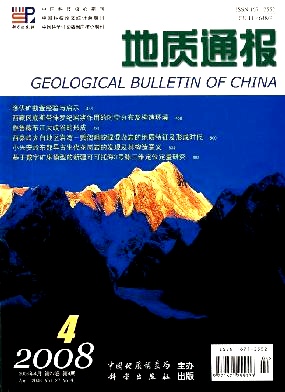Tran My Dung1,2, LIU Jun- lai1, HU Jian- jiang3, ZOU Yun-xin1, ZHANG Hong-yuan1. Discovery and geological significance of Sandaowanzi telluride type gold deposit in the northern Daxing′anling, Heilongjiang, China[J]. Geological Bulletin of China, 2008, 27(4): 584-587.
| Citation: |
Tran My Dung1,2, LIU Jun- lai1, HU Jian- jiang3, ZOU Yun-xin1, ZHANG Hong-yuan1. Discovery and geological significance of Sandaowanzi telluride type gold deposit in the northern Daxing′anling, Heilongjiang, China[J]. Geological Bulletin of China, 2008, 27(4): 584-587.
|
Discovery and geological significance of Sandaowanzi telluride type gold deposit in the northern Daxing′anling, Heilongjiang, China
-
1. State Key Laboratory of Geological Processes and Mineral Resources, China University of Geosciences, Beijing 100083, China;2. Hanoi University of Mining and Geology, Hanoi, Vietnam;3. Geological Survey of Heilongjiang Province, Ha′erbin 150036, Heilongjiang, China
-
Abstract
Sandaowanzi gold deposit in the northern Daxing′anling belongs to mesothermal-epithermal type. The gold bearing quartz veins are hosted by trachyandezite and trachyandezite brecia of lower Cretaceous Tamulangou formation. Optical Microscope and Scanning Electron microscope analyses with EDX indicate that tellurium-bearing gold mineral assemblage is the dominant gold-bearing minerals present in the ore vein. It is shown from statistical analysis that Au, Ag and Te contents are respectively, Au: 30.20 wt %, Ag: 34.35 wt %, and Te:35.45%wt. Based on the gold bearing mineral assemblages and metallogenic setting, the Sandaowanzi gold deposit may be comparable with typical epithermal Au-Ag-Te deposits in the world.
-

-
-
Access History







 DownLoad:
DownLoad: